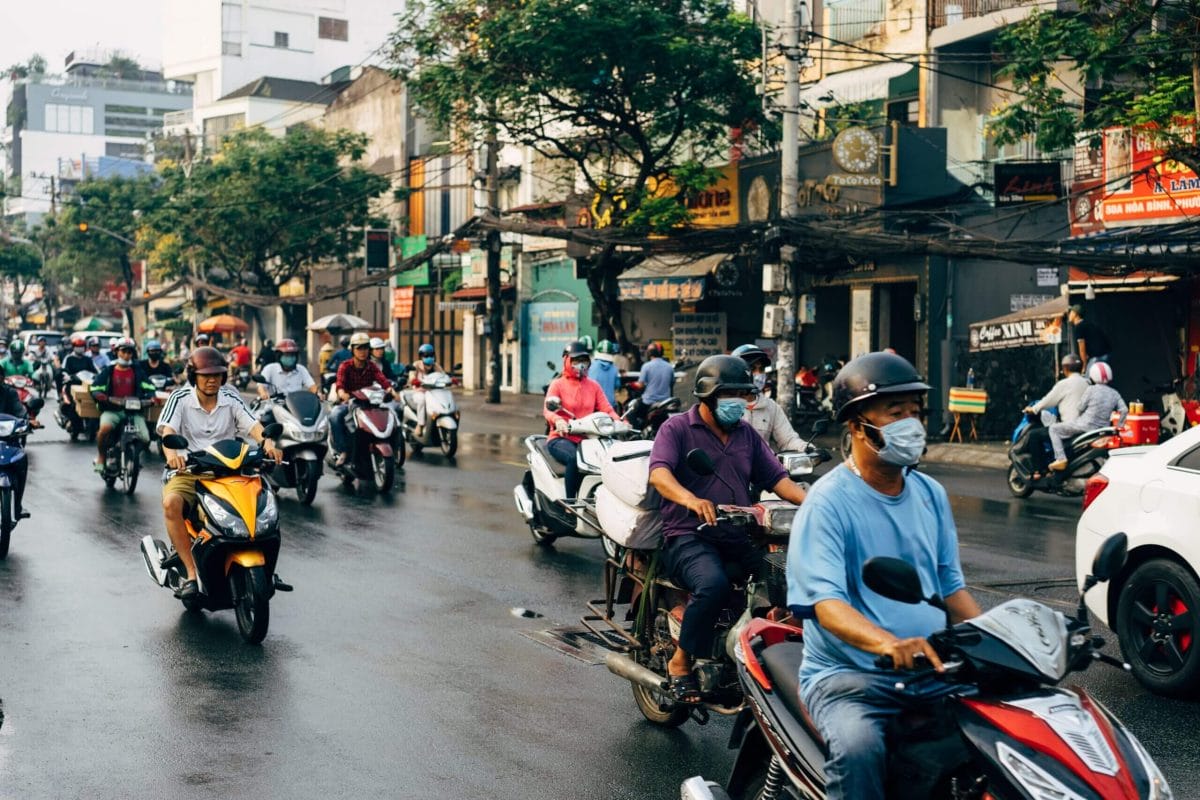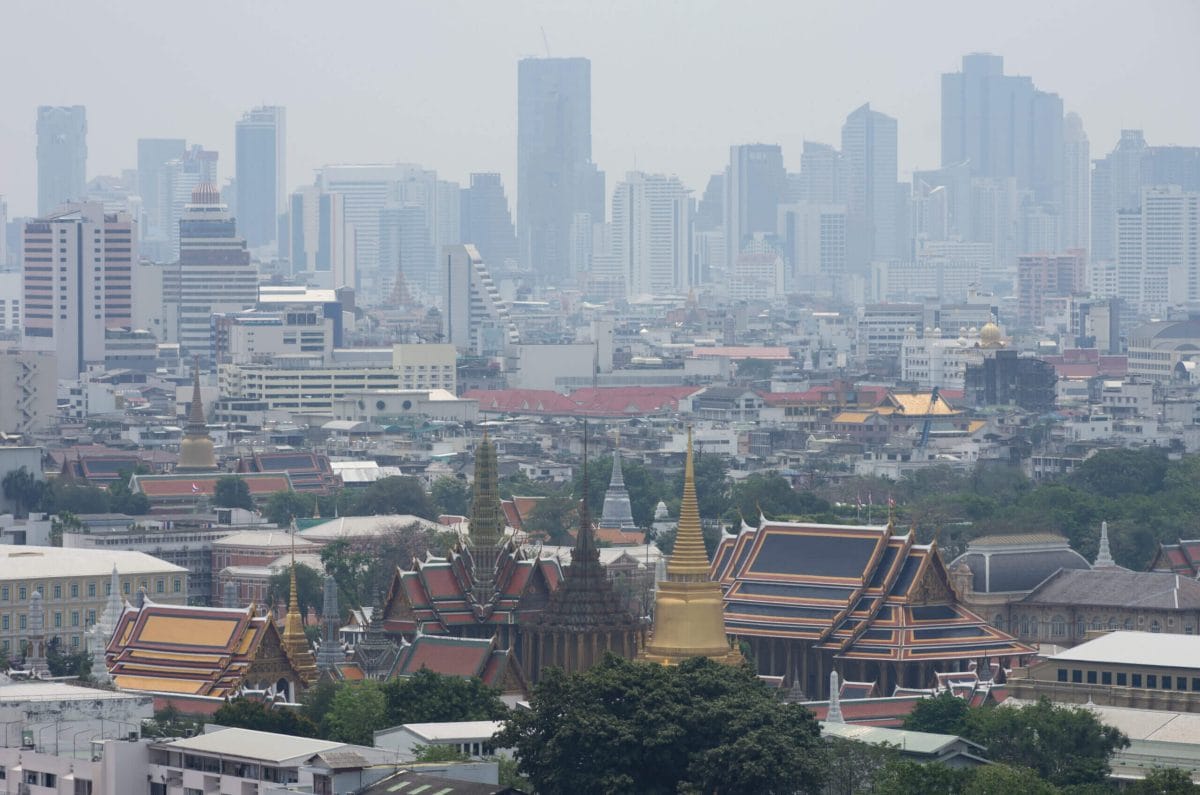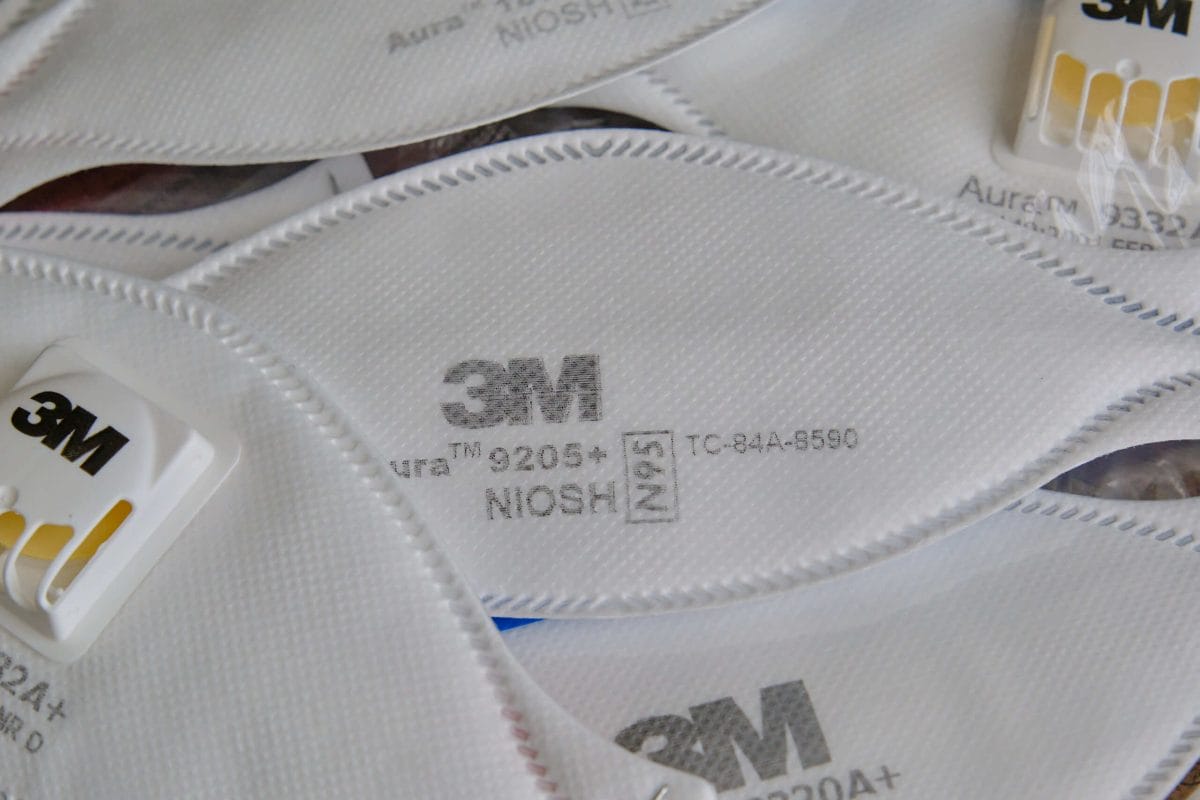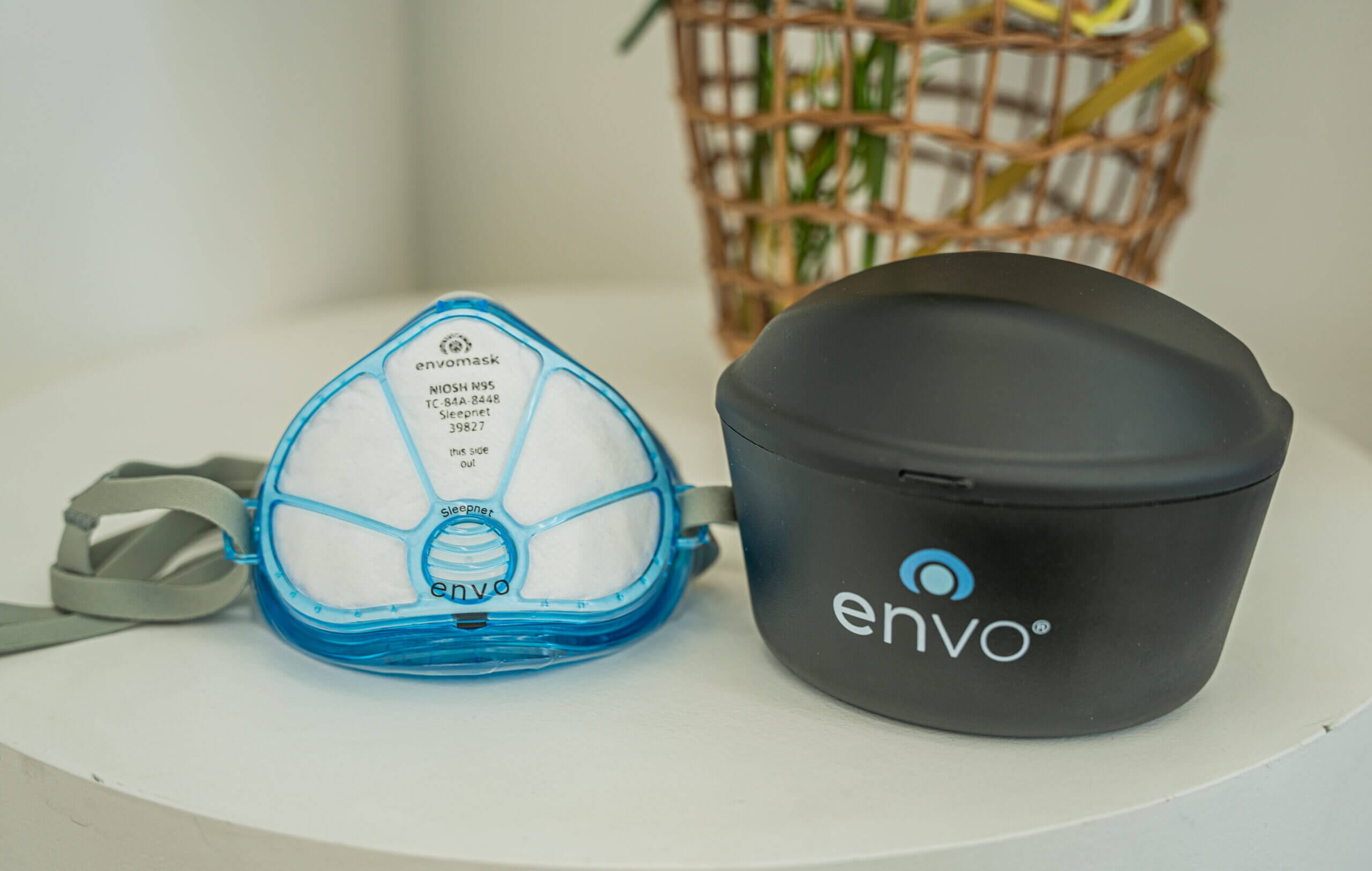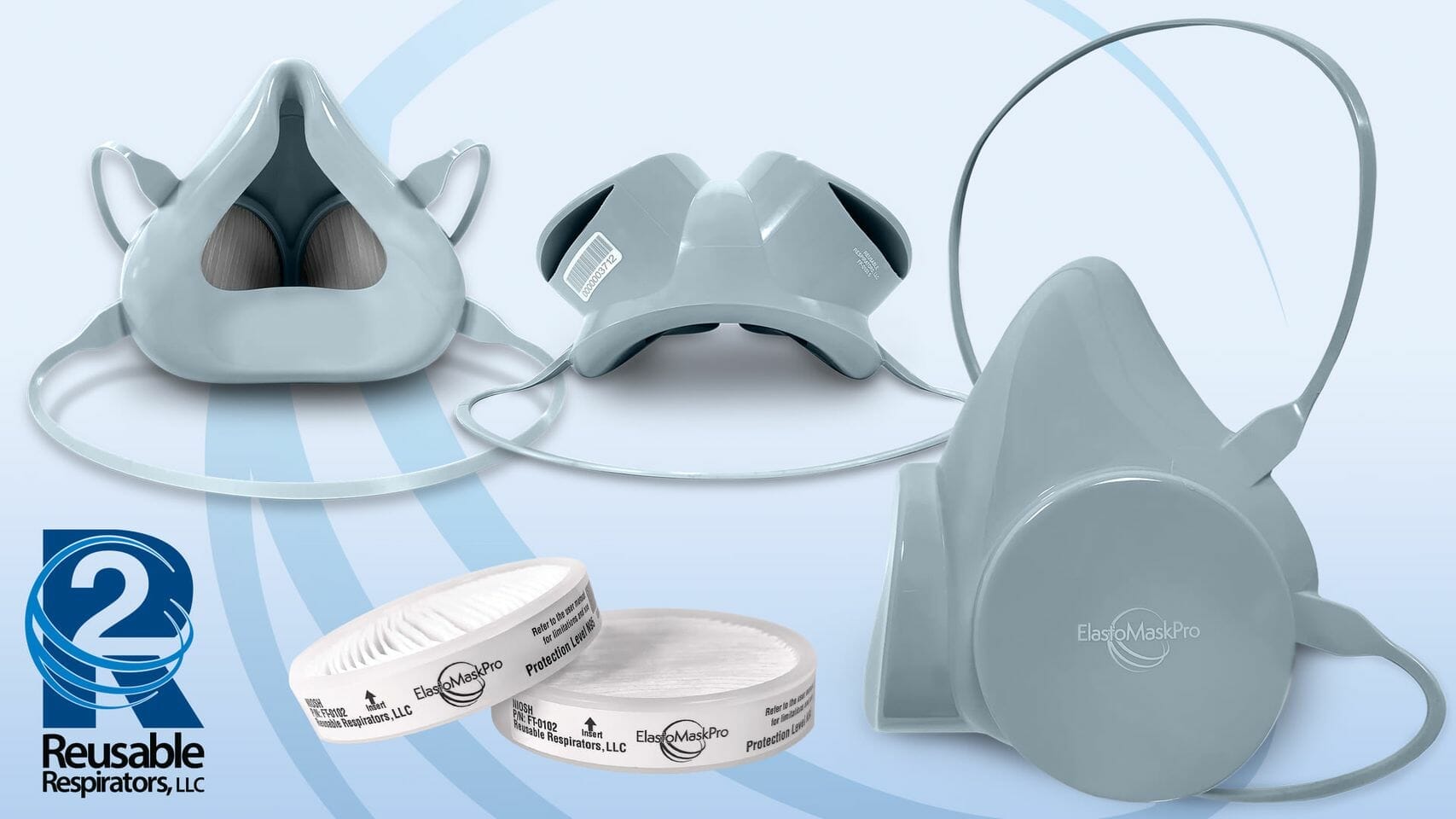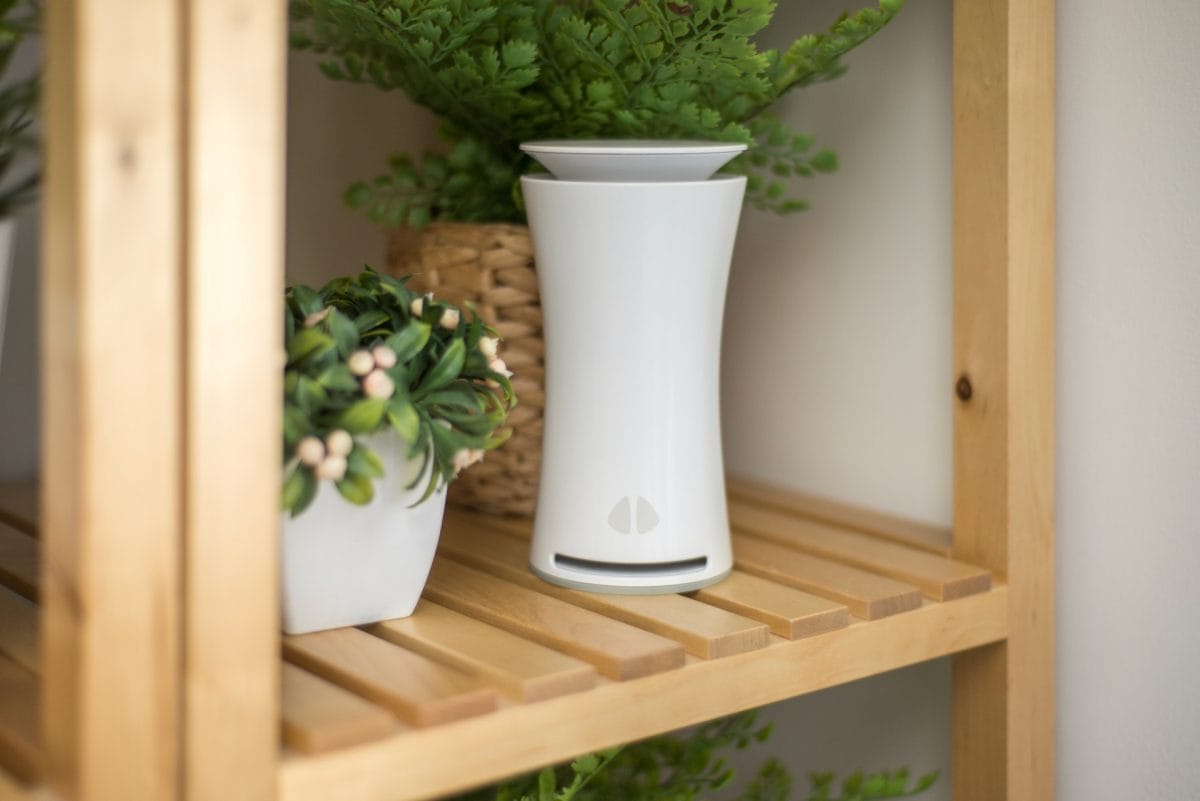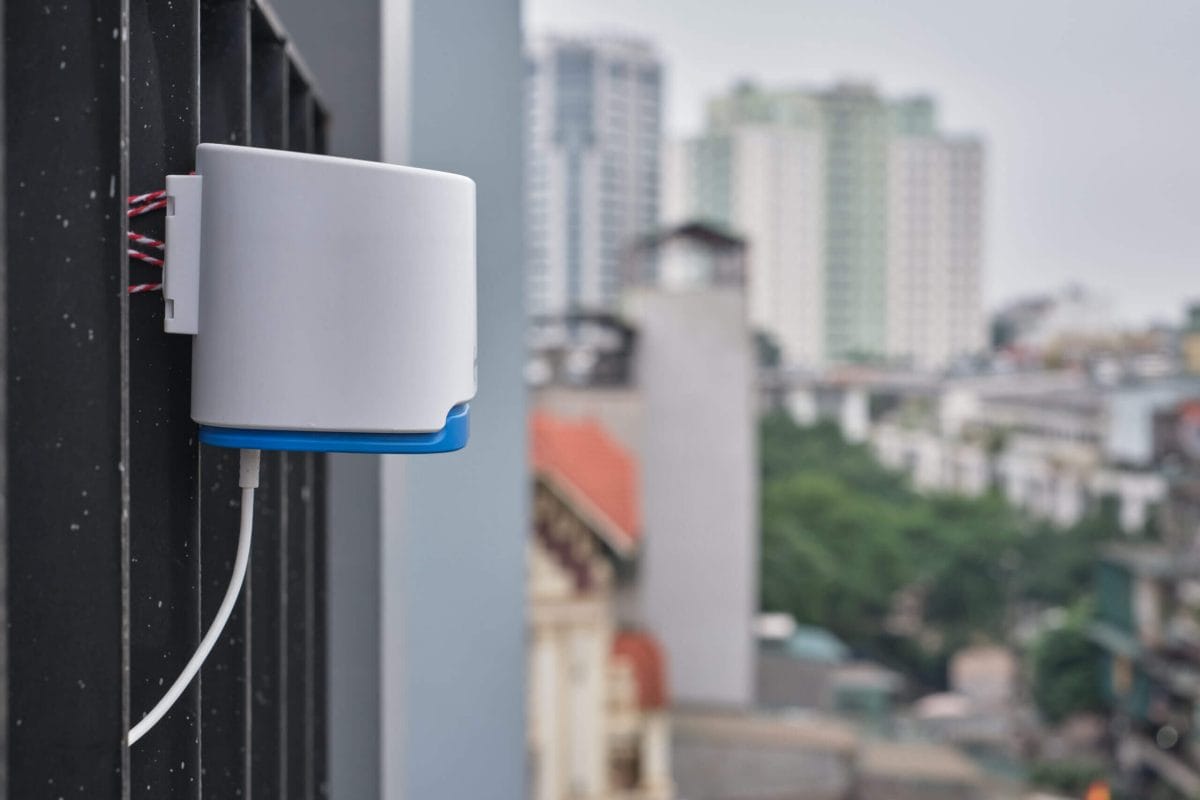Amidst the Philippines’ lush landscapes and cultural vibrancy, a global environmental issue casts a shadow – air pollution. This challenge, pervasive across many parts of the world, presented itself starkly during my six-month stay in the Philippines. Witnessing first-hand the localised yet profound impact of air pollution, especially in bustling cities like Manila, Cebu, and Davao, was a revelation.
Air pollution is not a problem unique to the Philippines. It’s a global crisis affecting countries across continents, from the smoggy skies of Delhi to the haze over Los Angeles. However, in the Philippines, the issue takes on a unique dimension, influenced by local factors and impacting the lives of millions. The contrast between rural areas and urban centres regarding air quality was particularly striking, underscoring that while larger cities bear the brunt, no part of the country is immune.
Global reports and statistics echo the severity of air pollution in the Philippines. According to the IQAir AirVisual 2020 World Air Quality Report, major Philippine cities often feature in lists of places with concerning air quality levels. The World Health Organization’s guidelines on air quality are frequently exceeded in these urban hubs, reflecting a scenario replicated in many parts of the world.
These statistics are a stark reminder of the pervasive nature of air pollution. This environmental issue has significant health, economic, and social implications in the Philippines, as in many other countries. The Department of Environment and Natural Resources (DENR) in the Philippines has acknowledged the substantial public health challenges of poor air quality.
However, the narrative of air pollution in the Philippines is not just one of challenges but also resilience and proactive measures. Both governmental and community efforts are in place to address this pressing issue. The fight against air pollution is global, and the Philippines is part of a worldwide community seeking sustainable solutions.
As we delve into the nuances of air pollution in the Philippines, viewing it as part of a broader global challenge is essential. This article will explore the specific causes, impacts, and potential remedies to air pollution in the Philippines while recognising that it is a critical issue that transcends national boundaries and calls for a unified global response.
If you are considering visiting, it’s a stunning place, and I highly recommend visiting. However, knowing the dangers before going is essential, and air pollution should be considered. If you’re living there, never fear! While air pollution is a serious issue, there are steps we can take to minimise its impacts on our health – these will be discussed in this article. Before we get to that, though, let’s look at why air pollution is such a severe issue in the Philippines.
If you’re interested in learning about air pollution in other countries, I’ve also discussed air pollution in Thailand, India, Pakistan, Vietnam and Seoul (Korea).
Subscribe to BreatheSafeAir
Air pollution is a silent killer that affects millions of people worldwide. Start protecting yourself today.
This post contains affiliate links. For more information, please refer to my affiliate disclaimer.
Information on this blog is for informational purposes only. Readers are encouraged to confirm the information herein with other sources. Furthermore, this information is not intended to replace medical advice from professionals. This website assumes no responsibility for the accuracy of the information, which is subject to change without notice.
Is Air Pollution an Issue in the Philippines?
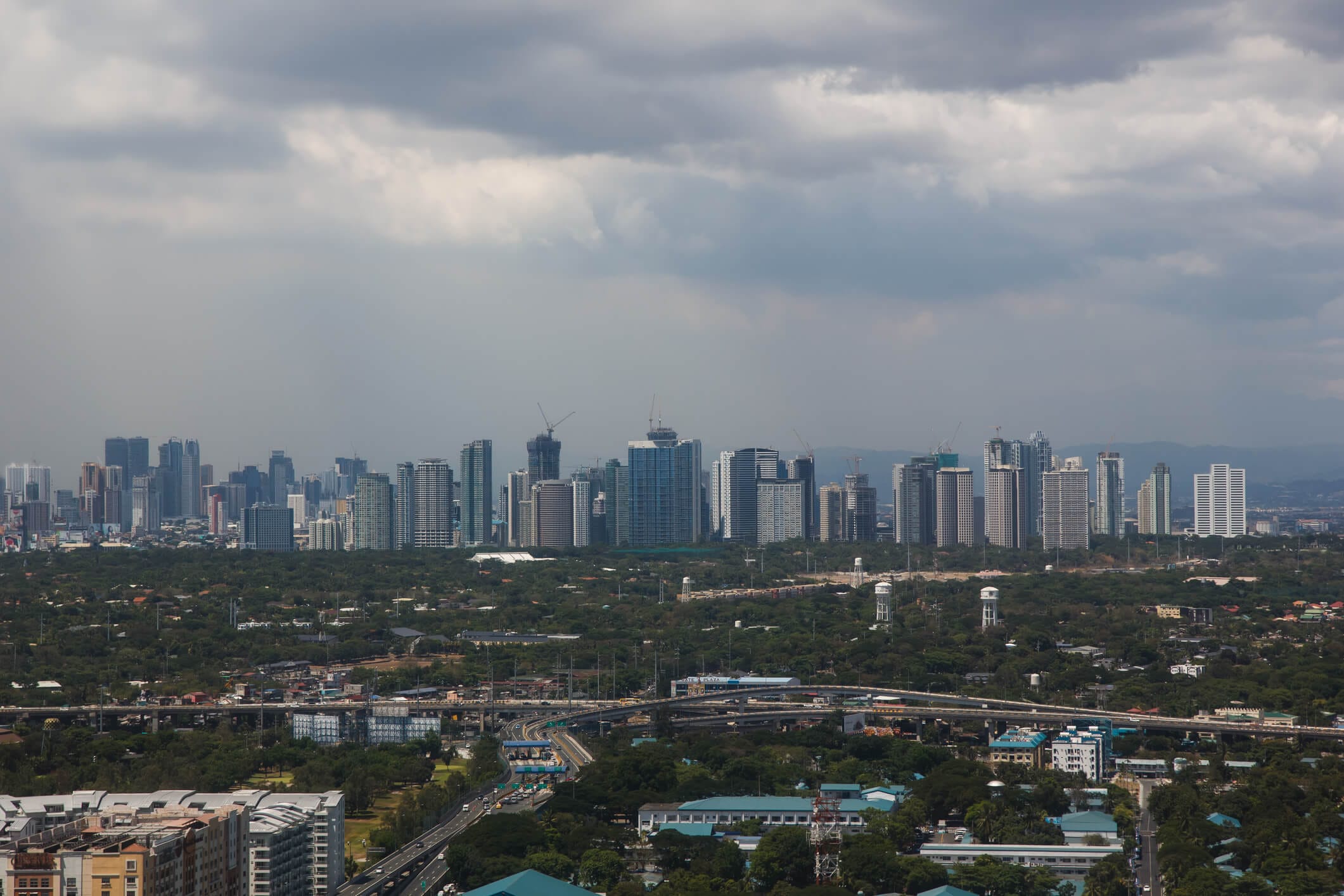
Air pollution in the Philippines presents a significant health and economic challenge, with its impact being felt across the archipelago. The severity of the situation is underscored by several alarming statistics highlighting the extent of this environmental crisis.
The severity of air pollution in the Philippines might not be as widely recognized as in some other countries, but it is a critical issue, nonetheless. As someone who has experienced the local environment first-hand, I can attest to the visible and tangible impact of pollution in the air, particularly in densely populated urban areas such as Manila.

WHO Philippines’ Health and Environment Scorecard.
The Philippines’ struggle with air quality is highlighted by the annual mean level of PM2.5, which is 24 µg/m³, significantly higher than the WHO’s recommended maximum of 5 µg/m³. This alarming level of pollution primarily stems from burning fossil fuels and vehicular emissions, especially in Metro Manila and other urban centres such as San Fernando, Antipolo, Biñan, Puerto Princesa, and Davao.
The health implications are profound. An estimated 66,230 deaths in 2019 were attributed to air pollution, marking it as a leading cause of death and disability due to non-communicable diseases (NCDs). The economic cost is equally staggering, with air pollution leading to a loss of PHP 2.32 trillion or 11.9% of the country’s GDP in 2019.

Data gathered from my air quality monitor in Manila. The section in the red box shows when the monitor was in Manila, and the blue line represents the WHO Annual Air Quality Guideline.
However, the challenge of air pollution in the Philippines extends beyond these statistics. The government’s response, including implementing the Clean Air Act of 1999, has been critiqued for its outdated standards in the face of the evolving environmental crisis. Moreover, lifting COVID-19 restrictions saw a marked deterioration in air quality in Metro Manila due to increased vehicle use.
In conclusion, while air pollution in the Philippines might not always make global headlines, the issue is severe and multifaceted, affecting the health, economy, and quality of life of millions. The country’s struggle against air pollution mirrors a global challenge, emphasizing the need for updated policies, public awareness, and concerted efforts to mitigate this environmental hazard.
Causes of Air Pollution in the Philippines

Air pollution in the Philippines is a multifaceted problem, stemming from various sources that collectively contribute to the degradation of air quality. This comprehensive exploration delves into the primary causes, each playing a significant role in the country’s air quality issues. Of course, it’s important to mention that this list isn’t exhaustive. While it covers the primary causes of both general and localised air pollution in the Philippines, there are other contributing factors, too.
1. Vehicular Emissions
Vehicular emissions, especially in urban centres like Metro Manila, are a primary source of air pollution. The significant increase in the number of vehicles, especially during peak hours, has led to heightened pollution levels. The lifting of COVID-19 restrictions further exacerbated this issue due to the sudden surge in vehicle usage , which has continued until today. It’s reported that vehicular sources account for 65% of air pollution in the Philippines, primarily in Metro Manila.
2. Jeepneys
Jeepneys, a cultural icon of the Philippines, are also major contributors to air pollution. Most Jeepneys use older, reconditioned diesel engines that emit significant amounts of black soot and other pollutants. They account for over 15% of road transportation greenhouse gas emissions and 48% of airborne particulate matter in Manila.
3. Industrial Pollution
Industrial activities, including factories and power plants, are another significant source of air pollution in the Philippines. In addition to vehicle emissions, these industrial sources release various pollutants that contribute to air quality deterioration in urban areas like Northern Manila. While motor vehicles were among the main causes of air pollution in the Philippines, contributing to 80% of the country’s air pollution in 2016, stationary sources, including factories and open burning, were responsible for 20%.
4. Slash-and-Burn Agriculture
Traditional agricultural practices such as slash-and-burn (kaingin) significantly impact air quality. This involves cutting and burning vegetation to clear land for farming, releasing carbon dioxide, carbon monoxide, and particulate matter into the air. Despite the government’s efforts through legislation like the Clean Air Act of 1999, this practice continues, especially in rural and indigenous communities. This issue exists all across Southeast Asia and also contributes significantly to air pollution in Thailand.
5. Use of Fireworks
While a seasonal cause, the use of fireworks during celebrations contributes to temporary spikes in air pollution. Firecrackers release harmful particulate matter, carbon, and sulfur, posing public health risks. Effective control of these spikes requires the enforcement of regulations by local government units.
6. Coal Burning
Coal burning is a significant source of air pollution in the Philippines. Despite being the most polluting fuel option, coal remains the dominant energy source in the country, accounting for 52% of gross power generation. Plans to ramp up coal production contrast with the Philippines’ commitment to reducing emissions under the Paris Agreement. Coal plant emissions are estimated to cause up to 2,400 deaths per year in the Philippines due to various diseases (Greenpeace also states that air pollution from fossil fuels, including coal, is attributed to cause an estimated 27,000 premature deaths per year in the Philippines).
7. Open Burning
Open burning, a common practice for waste disposal in some areas, contributes to air pollution by releasing toxic substances, including dioxins, furans, and particulate matter. This practice is particularly harmful in densely populated areas and near industrial sites, where the concentration of pollutants can be significantly higher.
8. Agricultural Activities
Agricultural activities contribute significantly to air pollution in the Philippines. This includes using fertilizers and pesticides, which can release harmful chemicals into the air. Other agricultural practices, such as the use of plastics, irrigation, land preparation practices, and the burning of agricultural residues, also contribute to air pollution. Additionally, animal waste management, both in land and aquatic farming, can release pollutants. Feed supplements, including antibiotics, hormones, and heavy metals in animal agriculture, further reduce air quality.
9. Household Pollution
Household pollution is a considerable source of air pollution in the Philippines. This includes emissions from cooking with solid fuels, kerosene, or other non-clean energy sources, especially prevalent in rural areas with limited access to clean fuels and technology. Burning waste and other materials in open spaces, a common practice in some areas contributes to air pollution. Furthermore, lead levels in Metro Manila are more than three times the World Health Organization’s established safe limit, indicating the severity of household pollution and its impact on air quality.
The causes of air pollution in the Philippines are diverse and interconnected, spanning from urban vehicular emissions and industrial activities to traditional practices like agricultural burning and cultural activities such as the use of fireworks. Addressing these varied sources requires a multi-faceted approach involving policy changes, technological advancements, and cultural shifts. The challenge is complex, but understanding these causes is the first step towards developing effective solutions to improve air quality and protect public health.
Seasonality of Air Pollution in the Philippines
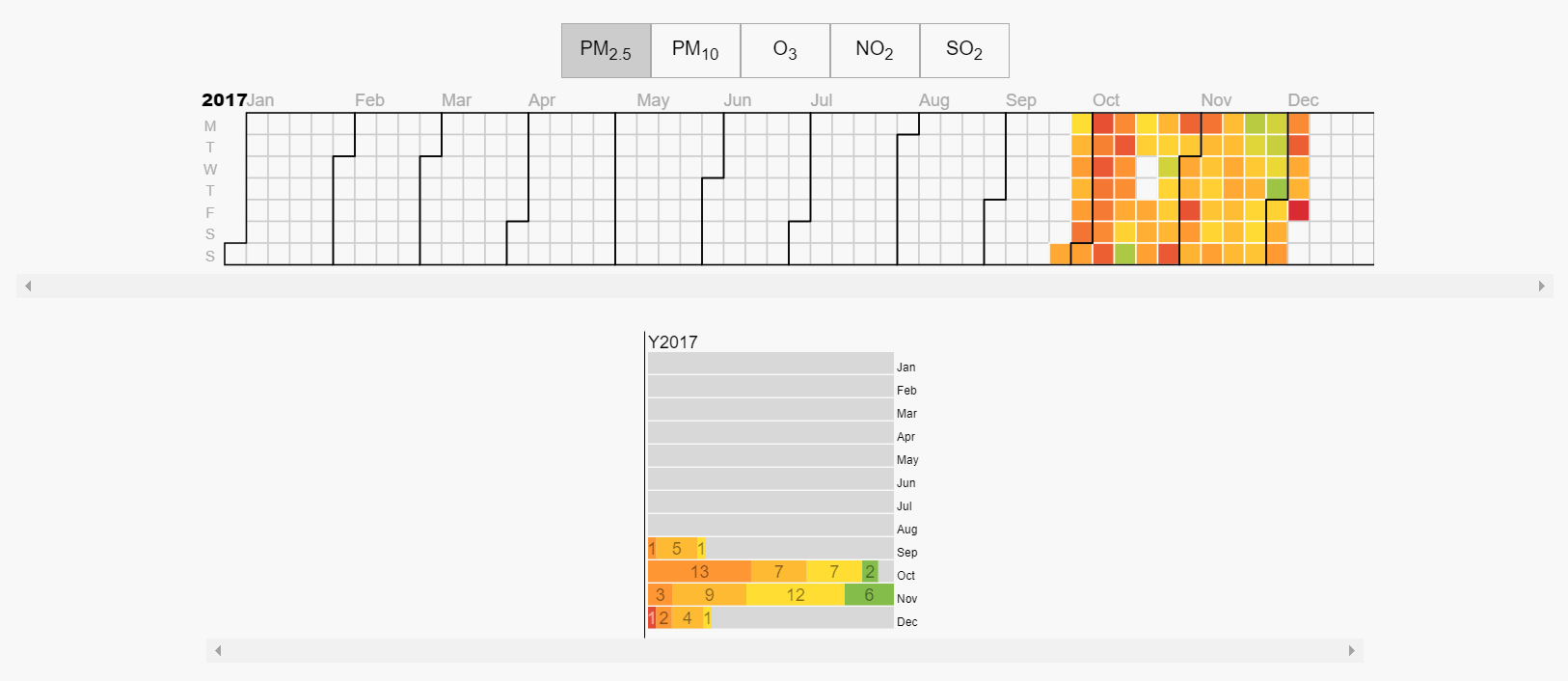
Image from AQICN. Unfortunately, finding historical data in the Philippines is very difficult due to the lack of and inconsistency of monitor reports.
Expanding on the seasonality of air pollution in the Philippines, it’s imperative to delve deeper into how these seasonal shifts affect various regions and the associated health risks. The interaction between climatic patterns, human activities, and geographic factors creates a complex tapestry of air quality issues that vary across the country.
During the dry season, from December to May, several factors converge to heighten air pollution levels. The absence of rain means pollutants are not naturally washed out of the atmosphere, allowing them to accumulate. This issue is exacerbated in urban areas like Metro Manila, where the high density of vehicles and industrial activities contributes to a significant increase in pollutants such as PM2.5, nitrogen dioxide, and ozone. The warmer temperatures and increased sunlight during these months also facilitate the formation of ground-level ozone, a major component of smog, which is particularly harmful to respiratory health.
In Metro Manila, the combination of high temperatures, intense sunlight, and stagnant air often leads to the formation of dense smog that blankets the city. This smog is a visibility hazard and poses serious health risks, exacerbating respiratory and cardiovascular conditions. Studies from the University of the Philippines have shown a notable increase in hospital admissions for respiratory and heart-related problems during the peak of the dry season.
Cebu and Davao, other major urban centres, experience similar trends. In these cities, the increase in air pollution during the dry season is also linked to the higher energy demand and consequent emissions from power plants. Additionally, the rise in construction activities during these drier months contributes further to the deteriorating air quality.

In rural and agricultural areas, the end of the dry season often coincides with the practice of crop burning. Farmers burn crop residue to prepare the land for the next planting season, leading to a significant release of pollutants. This practice, while localised, can have a substantial impact on the air quality in surrounding areas. The smoke from these fires contains a high concentration of particulate matter and other harmful pollutants, posing health risks to local communities.
The Philippines’ unique geography also plays a role in the seasonal variation of air pollution. For example, the mountainous regions and valleys can experience temperature inversions during the cooler months of the dry season. These inversions trap pollutants close to the ground, leading to higher concentrations of particulate matter and other pollutants in these areas.
The onset of the wet season brings some respite as the increased rainfall helps to clear the air of pollutants. However, this does not entirely eliminate air quality concerns. In urban areas, the wet season can exacerbate traffic congestion, leading to increased vehicle emissions. Moreover, flooding, a common occurrence during the rainy season, can cause disruptions, leading to longer vehicle idling times and, thus, higher emissions.
Despite the reduction in dust and other particulate matter, the wet season can also see a rise in biological pollutants such as mould and pollen, which are dispersed in the air and can aggravate allergies and respiratory conditions. The high humidity levels during this season can interact with pollutants to form secondary aerosols, which are also detrimental to air quality.
Furthermore, the impact of the wet season on air quality is not uniform across the Philippines. Regions that experience more frequent and intense rainfall may see a more significant improvement in air quality compared to areas with less rainfall. This regional variability necessitates localized air quality management strategies.
In summary, the seasonality of air pollution in the Philippines is a complex interplay of climatic, geographic, and human factors. The dry season generally sees higher pollution levels due to factors like reduced rainfall, higher temperatures, and increased human activities, while the wet season offers some improvement but with its challenges. Understanding these patterns is crucial for implementing effective air quality management and public health strategies across different regions of the country.
Hyperlocal Air Pollution in the Philippines

Air pollution monitor locations as per OpenAQ. Want to contribute?
In the Philippines, air pollution is not just a widespread issue but also a hyper-local one, with significant variations in air quality often observed within short distances. This variability is attributed to several local factors, including unique contributors like jeepneys. Understanding these hyper-local dynamics is key to addressing air quality issues effectively.
Jeepneys, a popular mode of public transport in the Philippines, are known for their vibrant designs and cultural significance. However, they are also significant contributors to local air pollution:
- High Emissions: Many jeepneys are older vehicles with inefficient engines that emit high levels of pollutants, including particulate matter (PM), carbon monoxide (CO), and nitrogen oxides (NOx).
- Traffic Congestion: Jeepneys, often operating in congested urban areas, contribute to traffic-related air pollution. The stop-and-go nature of their routes leads to increased emissions.
- Impact on Air Quality: The concentration of jeepneys in certain areas can lead to pockets of high pollution, affecting the air quality on a hyper-local level.
Of course, Jeepneys aren’t the only issue here. While they contribute to almost 50% of the particulate pollution in Manila, there are many other contributing factors. A few of these are discussed below:
- Industrial Emissions: Industrial facilities can significantly impact local air quality, especially in or near residential areas. Factory emissions vary based on the type of industry and the pollutants released.
- Construction Activities: Construction sites are sources of dust and other particulates. Depending on their proximity to residential areas, they can greatly affect local air quality.
- Urban Density: High-density urban areas, with a mix of traffic, commercial activities, and population, often experience varied air quality levels. Narrow streets and tall buildings can trap pollutants, exacerbating the situation.
- Natural Factors: Factors like wind direction and speed can dramatically affect how pollutants disperse, leading to variable air quality in different parts of a city.
The distinct and hyper-local characteristics of air pollution in the Philippines, shaped by elements such as jeepneys and industrial emissions, underscore the importance of individual monitoring and proactive measures. In a landscape where air quality can vary dramatically from one street to the next, relying on generalised data may not suffice. This reality elevates the necessity for personal air quality monitors, allowing individuals to obtain accurate, real-time information about the air quality in their immediate surroundings. Such devices become indispensable tools in making informed decisions about daily activities, particularly in areas prone to high pollution levels.
Moreover, in regions where high pollution is prevalent and personal monitoring is not feasible, the use of masks becomes essential. Wearing masks in known high-pollution areas, especially during peak traffic hours or near industrial zones, can provide a critical layer of protection against harmful pollutants.
Ultimately, understanding and adapting to the hyper-local nuances of air pollution through personal monitoring and protective measures like masking is key to safeguarding health in the Philippines’ diverse air quality landscape.
Health Effects of Air Pollution in the Philippines

Focusing on the health effects of air pollution in the Philippines, a deeper analysis reveals a grave scenario. The country’s air quality, particularly in urban areas, has direct and far-reaching consequences on public health, affecting various physical and mental well-being aspects.
The immediate and most apparent impact of air pollution is on respiratory health. The high levels of PM2.5 and PM10, predominantly from vehicular and industrial emissions, are primary contributors to respiratory ailments. Chronic exposure to these particles aggravates conditions such as asthma, bronchitis, and other chronic respiratory diseases. The Philippine College of Chest Physicians has noted an uptick in patients suffering from these conditions in areas with poor air quality. Furthermore, studies have shown that air pollution can impair lung function in both children and adults, leading to decreased lung capacity and efficiency.
The impact on cardiovascular health is equally alarming. Air pollutants, especially fine particulate matter, can penetrate deep into the lungs and enter the bloodstream, leading to systemic inflammation and oxidative stress. This can accelerate the development of atherosclerosis (plaque build-up in arteries), increasing the risk of heart attacks and strokes. The Philippine Heart Association has reported a correlation between high air pollution levels and a rise in cardiovascular disease cases, including hypertension and ischemic heart disease.
Another concerning aspect is the link between air pollution and cancer, particularly lung cancer. Carcinogenic compounds found in air pollutants, such as polycyclic aromatic hydrocarbons (PAHs), can increase the risk of developing lung cancer. Data from the Philippine Cancer Society indicates a higher prevalence of lung cancer in urban areas, where air pollution levels are significantly higher.
Emerging research also points to the potential impact of air pollution on cognitive health. Exposure to high levels of air pollution has been associated with an increased risk of cognitive decline, including Alzheimer’s disease and other forms of dementia. This is particularly concerning for the ageing population in the Philippines, as it adds another dimension to the health risks they face.
Children are especially vulnerable to the adverse effects of air pollution. Their developing bodies and higher breathing rates make them more susceptible to pollutants. This can lead to immediate health issues, such as asthma and respiratory infections, and long-term developmental impacts, including reduced lung growth and function. The Department of Health in the Philippines has highlighted the increasing respiratory issues among children in polluted areas.
The psychological and mental health implications of air pollution are gaining attention. The stress and anxiety associated with living in polluted environments, coupled with the physical health impacts, can contribute to mental health issues. This aspect of health is increasingly relevant in urban Filipino communities, where air pollution levels are highest.
The economic burden of these health impacts cannot be ignored. The cost of healthcare for diseases caused or exacerbated by air pollution, loss of productivity due to illness, and the overall impact on quality of life are substantial. This underscores the urgency of addressing air pollution from a public health perspective.
In conclusion, the health effects of air pollution in the Philippines are extensive, impacting respiratory, cardiovascular, and cognitive health and mental wellbeing. Children and the elderly are particularly vulnerable. These impacts underscore the need for urgent and effective measures to improve air quality and protect public health.
Government Policies Targeting Air Pollution
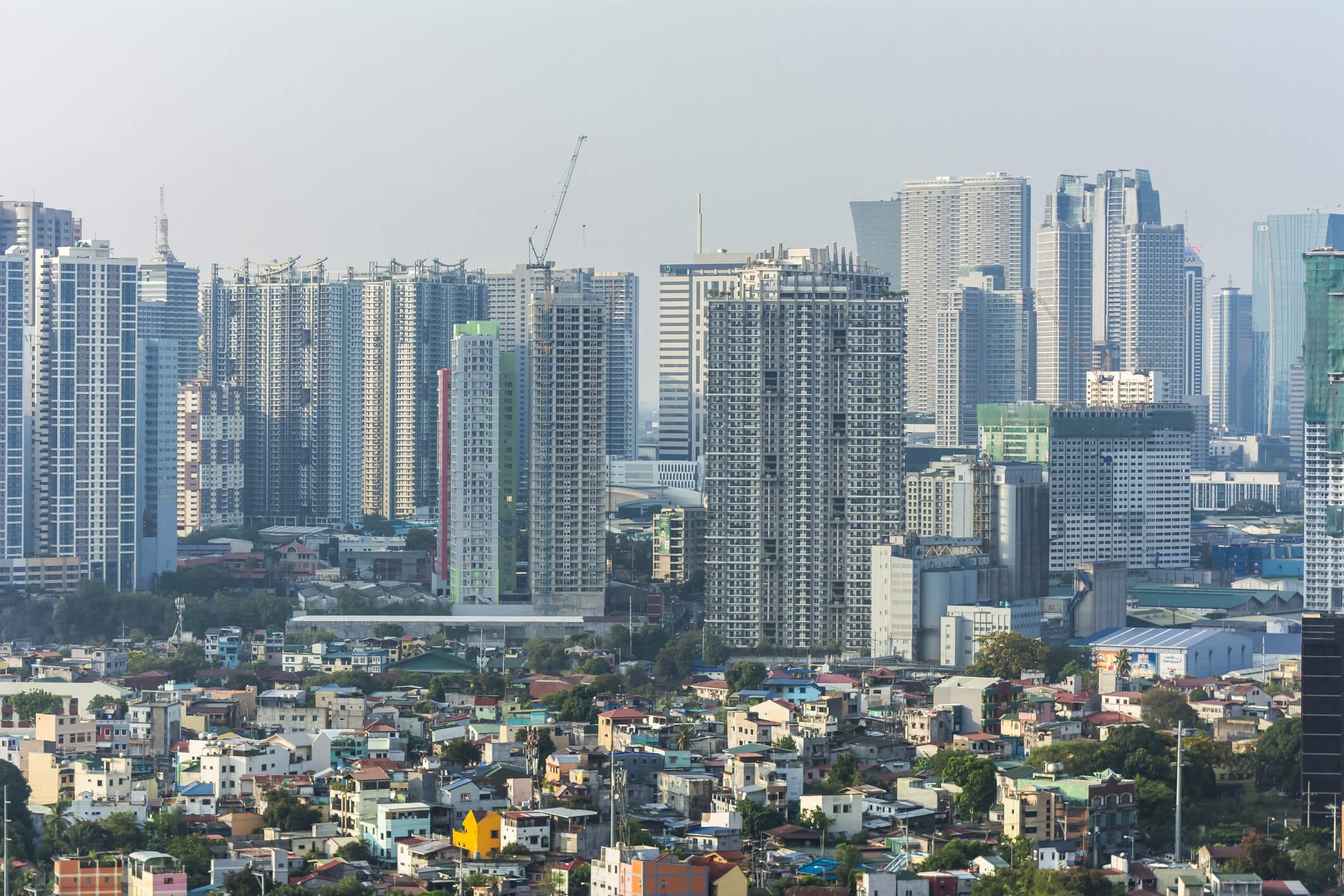
The Philippines’ Clean Air Act of 1999 (Republic Act No. 8749) marked a significant step forward in the country’s environmental policy. It established a comprehensive air quality management policy to reduce air pollution and protect public health. Key provisions of the Act include:
- Emission Standards: The Act sets national emission standards for various sources, including industrial plants and vehicles.
- Monitoring and Reporting: It mandates regular monitoring and reporting of air quality, requiring local governments to maintain and operate air quality monitoring stations.
- Vehicle Emission Control: The Act enforces emission standards for vehicles and requires regular emissions testing.
- Ban on Incineration: It prohibits incineration as a method of waste disposal, which can contribute significantly to air pollution.
Other Policies and Regulations that have been enacted in the Philippines in order to reduce and prevent air pollution include:
- Philippine Clean Air Act Implementing Rules and Regulations: These rules provide guidelines for the implementation of the Act, including air quality standards, licensing, and penalties for violations.
- Executive Order No. 774 (2008): This order reorganized the Presidential Task Force on Climate Change, reinforcing the government’s commitment to addressing environmental issues.
- The Philippine Environmental Impact Statement (EIS) System: Under this system, certain projects must undergo an environmental impact assessment to ensure they meet environmental safety standards.
Unfortunately, while these policies are robust on paper, there are several gaps in their implementation and scope. For example, point 3 about vehicle emission control is not enforced or at least not widespread, as many vehicles on the road do not comply. Below are some current policy gaps and other issues – one of which I’ve just mentioned!
- Enforcement Issues: One of the major challenges is the lack of strict enforcement. Many vehicles, especially older public transport vehicles like jeepneys, do not comply with emission standards.
- Outdated Standards: Some of the air quality standards set in the Act are considered outdated compared to international benchmarks set by organizations like the World Health Organization.
- Lack of Public Awareness: There is a general lack of awareness among the public about air quality issues and the importance of compliance with environmental regulations.
- Insufficient Monitoring Infrastructure: The Philippines needs a more comprehensive monitoring infrastructure to provide accurate and real-time air quality data across different regions.
Now, I’m not someone who can comment on government policies because, at the end of the day, I have no idea what policies are realistic for the Philippines or any country. With that said, I need to leave this section with some recommendations in case anyone with the power to change reads this article. Here are a few suggestions that I feel would address the issues with current policies:
- Updating Emission Standards: The government could revise the emission standards to align with current international standards, particularly for PM2.5 and NOx emissions.
- Strengthening Enforcement: There should be stricter enforcement of existing laws, with penalties for non-compliance. This includes regular and rigorous vehicle emissions testing.
- Public Awareness Campaigns: Implementing educational campaigns to raise awareness about air pollution and its health impacts can encourage public support for environmental policies.
- Expansion of Monitoring Infrastructure: Investing in more comprehensive air quality monitoring systems would provide better data, aiding policy formulation and public awareness.
- Promoting Clean Energy and Sustainable Transport: Policies encouraging clean energy and sustainable transport options can help reduce reliance on fossil fuels, a major source of air pollution.
- Community Participation: Engaging local communities in air quality monitoring and environmental protection initiatives can lead to more effective implementation of policies.
The Clean Air Act of 1999 laid a foundational framework for addressing air pollution in the Philippines. However, it is crucial to address its gaps through updated standards, stricter enforcement, public education, and infrastructure development. By enhancing these areas, the Philippines can make significant strides towards cleaner air and a healthier environment.
Understanding AQI In the Philippines
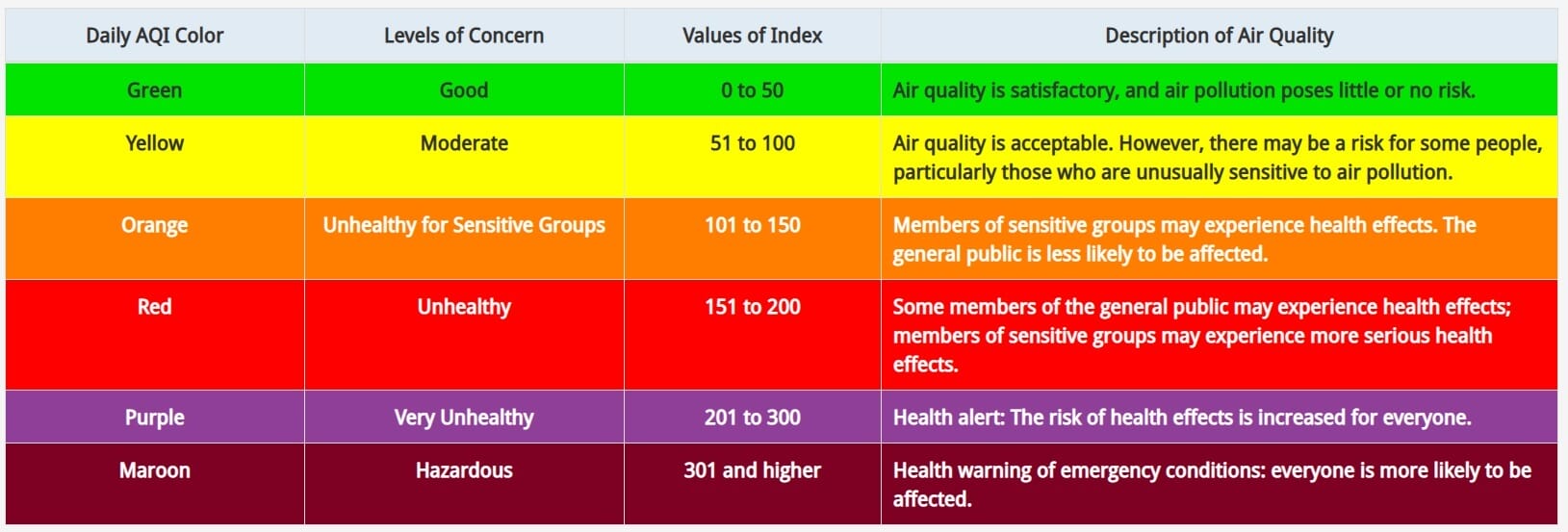
Air quality is a critical global concern, and understanding it becomes essential in regions like the Philippines, where pollution levels can vary. A fundamental tool for gauging air quality is the Air Quality Index (AQI) developed by the United States Environmental Protection Agency (U.S. EPA). This index provides an easily understandable method to assess air quality and its impact on health.
While some countries (such as India) use their own AQI scales, the Philippines does have a national index. Instead, it uses the most commonly used scale, developed by the U.S. EPA. It’s also worth mentioning that other air quality apps you might use in the Philippines, such as IQAir’s AirVisual, also use this scale. Therefore, we will be discussing how you can interpret the EPA scale in this article.
The U.S. EPA AQI is a scale from 0 to 500 designed to offer a clear understanding of air quality levels. It employs a colour-coded system:
- Green (0-50) – Good: Air quality is satisfactory, and pollution poses little or no risk.
- Yellow (51-100) – Moderate: Air quality is acceptable; however, there may be concerns for some people sensitive to pollution.
- Orange (101-150) – Unhealthy for Sensitive Groups: Sensitive individuals may experience health effects, but the general public is not likely to be affected.
- Red (151-200) – Unhealthy: Everyone may start to experience health effects; sensitive groups may experience more serious effects.
- Purple (201-300) – Very Unhealthy: Health alert – everyone may experience more serious health effects.
- Maroon (301-500) – Hazardous: Health warnings of emergency conditions; the entire population is likely to be affected.
This index is calculated based on five major air pollutants regulated by the Clean Air Act: ground-level ozone, particulate matter (PM2.5/PM10), carbon monoxide, sulfur dioxide, and nitrogen dioxide.
In the Philippines, a significant challenge in air quality monitoring is the scarcity of local air quality monitors. This lack of extensive monitoring infrastructure means obtaining accurate and localised AQI readings can be difficult. Due to this, residents often have to rely on limited data, which might not reflect the true air quality in their immediate environment.

Compared to nearby countries, the Philippines has very few air quality monitors on AirVisual.
In situations where local AQI data is not readily available, you might want to consider purchasing personal air quality monitors. These devices can provide real-time data specific to one’s immediate surroundings, offering a more accurate picture of the air quality in their specific area. Brands like AirGradient, PurpleAir, and IQAir provide various models that can monitor particulates and other pollutants.
Despite the challenges, online platforms such as AQICN.org and mobile apps like AirVisual and Plume Labs’ Air Report provide real-time AQI readings for various locations, including the Philippines. These resources are invaluable for planning daily activities, especially on days with poor air quality.
Understanding the AQI enables you to make informed decisions regarding their health and safety. By keeping track of the AQI, you can identify patterns in air quality changes and take proactive measures, such as using air purifiers or avoiding outdoor activities during high pollution.
The U.S. EPA AQI is crucial for understanding and interpreting air pollution levels. Familiarity with this index, combined with the use of personal air quality monitors and online platforms, can significantly aid in mitigating the health risks associated with air pollution.
How Can I Protect Myself from Air Pollution in the Philippines?
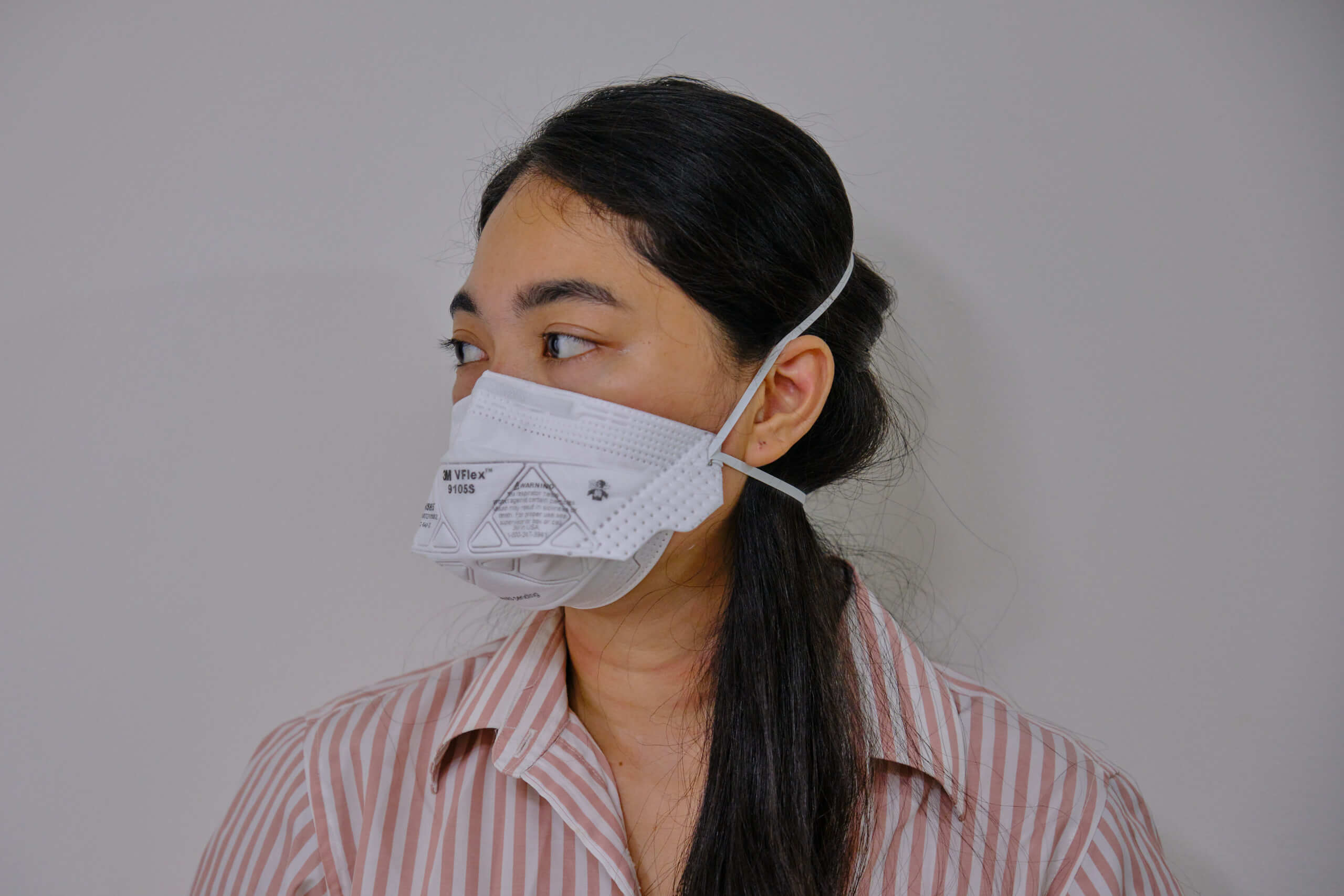
Wearing a mask is our best method of defence when outside.
Understanding the U.S. EPA Air Quality Index (AQI) is crucial for making informed decisions about outdoor activities and personal health, especially in a varied air quality landscape like the Philippines. However, how should you act based on this data? Below, I will provide practical recommendations based on the AQI for activities such as wearing masks, exercising, and considering staying indoors.
However, I need to mention that I am not an expert on these matters. If you’re concerned about your health, and how air pollution could be impacting it, you should discuss the matter with your doctor. With that said, let’s see what actions you should take based on the air quality index in order to protect yourself:
- Green (0-50) – Good:
- Outdoor Activities: Safe for all. Enjoy outdoor activities without any special precautions.
- Masks: Not necessary.
- Yellow (51-100) – Moderate:
- Outdoor Activities: Generally safe, but sensitive individuals should consider limiting prolonged outdoor exertion.
- Masks: Children, older adults, and people with respiratory or heart conditions should consider wearing masks if they feel discomfort.
- Orange (101-150) – Unhealthy for Sensitive Groups:
- Outdoor Activities: Sensitive groups should reduce outdoor exertion. This includes individuals with heart and lung conditions, older adults, and children.
- Masks: Advisable for sensitive groups when outdoors.
- Exercise: Sensitive groups should limit prolonged or heavy exertion. Consider indoor exercises.
- Red (151-200) – Unhealthy:
- Outdoor Activities: Everyone should reduce prolonged or heavy exertion. Consider shortening or rescheduling outdoor activities.
- Masks: Recommended for all groups when outdoors, especially N95 masks that can filter particulate matter.
- Exercise: Move activities indoors or reduce the intensity.
- Purple (201-300) – Very Unhealthy:
- Outdoor Activities: Everyone should avoid prolonged or heavy exertion outdoors. Consider staying indoors as much as possible.
- Masks: Strongly recommended when outside; N95 masks or higher-grade respirators are preferable.
- Exercise: Avoid outdoor exercises; indoor exercises are preferable.
- Maroon (301-500) – Hazardous:
- Outdoor Activities: Everyone should avoid all outdoor activities.
- Staying Indoors: Advisable for all. Close windows and use air purifiers to maintain indoor air quality.
- Masks: Essential during any unavoidable outdoor exposure.
On top of these general recommendations, there are also a few other steps that you can take to ensure you stay safe from the dangers of air pollution. I will briefly mention these below before diving into details about the most important measures you should be taking to protect your health.
- Air Purifiers: In areas with frequent high AQI levels, consider using air purifiers with HEPA filters to maintain indoor air quality.
- Ventilation: On days with good air quality, ventilate homes to reduce indoor air pollution.
- Monitoring Health: Pay close attention to symptoms such as coughing, shortness of breath, or heart palpitations, and consult a doctor if these occur.
Check the AQI Daily (Or More!)
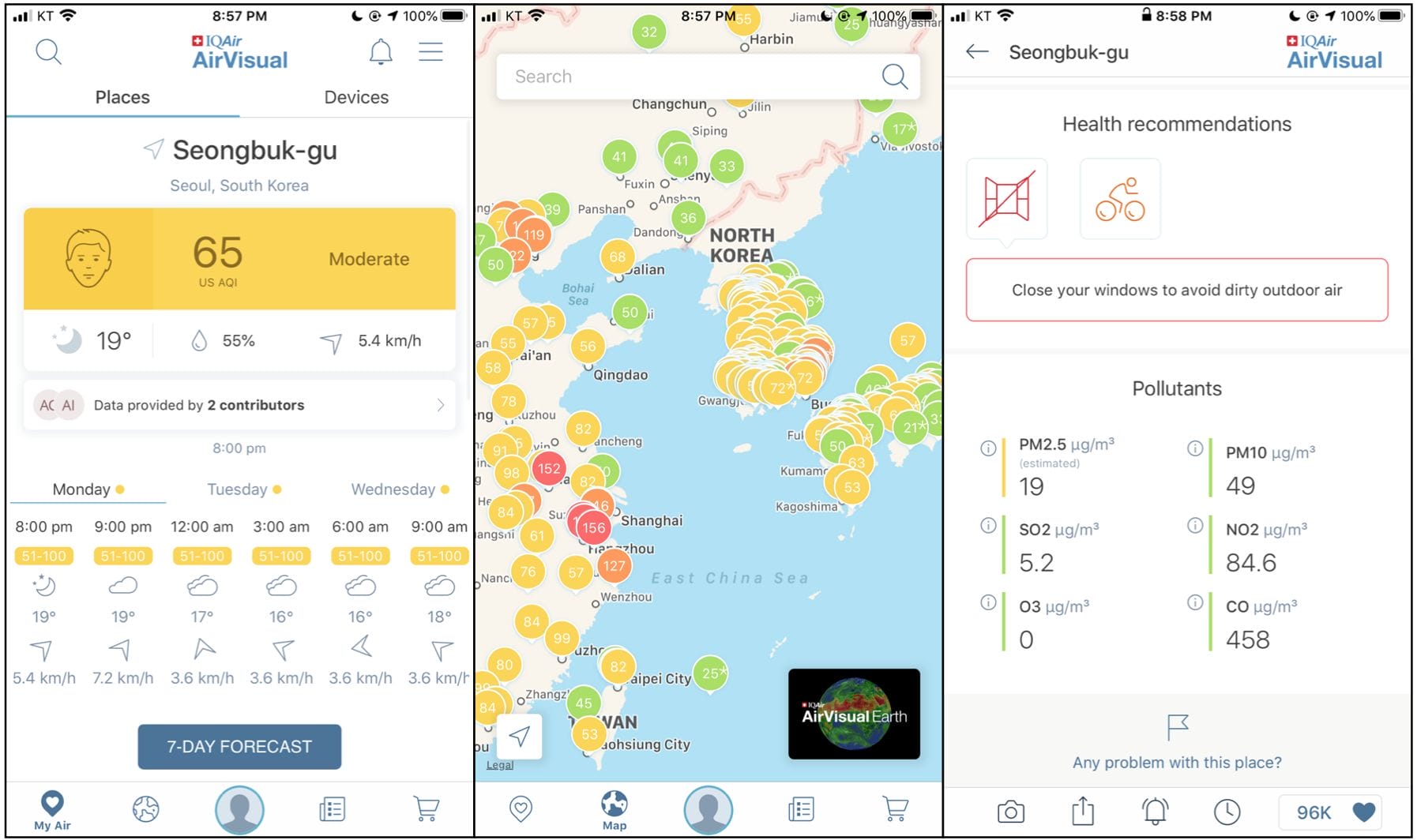
In an environment like the Philippines, where air quality can change rapidly, regularly checking the Air Quality Index (AQI) is not just a matter of information but a crucial step in safeguarding health. The AQI serves as an essential guide to making daily decisions about outdoor activities, masking, and exercise. Understanding the day’s air quality helps individuals take proactive steps to protect their well-being.
The AQI’s primary role is to inform the public about the day’s air pollution levels and guide them in making health-conscious choices:
- When to Wear Masks: As discussed earlier, knowing the AQI level helps determine when wearing a mask is necessary, especially for sensitive groups or during periods of high pollution.
- Limiting Outdoor Activities and Exercise: The AQI informs when it is safe to engage in outdoor activities or when it’s advisable to stay indoors or modify exercise routines.
- Vulnerable Groups: For individuals with pre-existing health conditions, children, older adults, and pregnant women, daily AQI checks are crucial for avoiding exposure during high pollution periods.
Convenient access to AQI data is key in making these checks a regular part of one’s routine. In my experience, adding an AQI widget to my phone’s home screen or Apple Watch has been incredibly helpful. This setup allows for a glance at the current air quality, ensuring that I am always aware of the day’s pollution levels without actively seeking the information.
- Smartphone Widgets: Many air quality apps offer widgets that can be added to your phone’s home screen, providing real-time AQI updates at a glance.
- Wearable Devices: For those with smartwatches like the Apple Watch, AQI apps can deliver updates directly to your wrist, making it even more convenient to stay informed.
Making AQI checks a part of your daily routine is vital in regions with fluctuating air quality. It’s a simple yet effective habit that can significantly impact health and well-being. With technology offering easy and immediate access to this data, staying informed has never been more straightforward.
Wear a Mask


I wore a mask almost every time I went outdoors. Left, Davao. Right, Pasay City.
Understanding when to wear a mask and what type is crucial. Masks play a vital role in protecting against harmful pollutants, especially when the Air Quality Index (AQI) indicates elevated levels of air pollution. However, not all masks are equally effective, and understanding the right type to use is essential.
The necessity of wearing a mask depends on the AQI level and individual health conditions. The general guideline for donning a mask varies between at-risk groups and the general public:
- At-risk groups (individuals with respiratory or heart conditions, the elderly, and children) should consider wearing masks at a lower AQI level. As a precaution, wearing masks is advisable when the AQI enters the Moderate (Yellow, 51-100) range.
- The general public should start considering masks when the AQI reaches the Unhealthy for Sensitive Groups (Orange, 101-150) level. As the AQI rises further, the need becomes more pressing.
Not all masks offer the same level of protection against air pollutants. Cloth and surgical masks, commonly used for hygiene purposes, are ineffective against most air pollutants, including PM2.5 particles. For adequate protection against air pollution, high-quality, well-fitted respirators are necessary.
- N95 Respirators: These masks are designed to filter out at least 95% of airborne particles, including PM2.5. They provide a balance between good filtration and breathability.
- Higher-grade Respirators (N99, N100): These offer even higher filtration efficiency but may be less breathable.
- Fit and Seal: The effectiveness of any respirator largely depends on its fit. Masks should form a tight seal around the nose and mouth to prevent unfiltered air from seeping in.
It’s important to acknowledge that the threshold for risk varies from person to person. Individuals with pre-existing health conditions, like asthma or cardiovascular diseases, are more susceptible to the harmful effects of air pollution. Similarly, children and older adults are at a higher risk due to their developing or weaker respiratory systems.
Therefore, these individuals should adopt a more cautious approach, considering mask usage at lower AQI levels compared to the general population. It’s also advisable for everyone to monitor their health and symptoms when exposed to higher pollution levels, regardless of AQI, and take protective measures accordingly.
Restrict Outdoor Activities
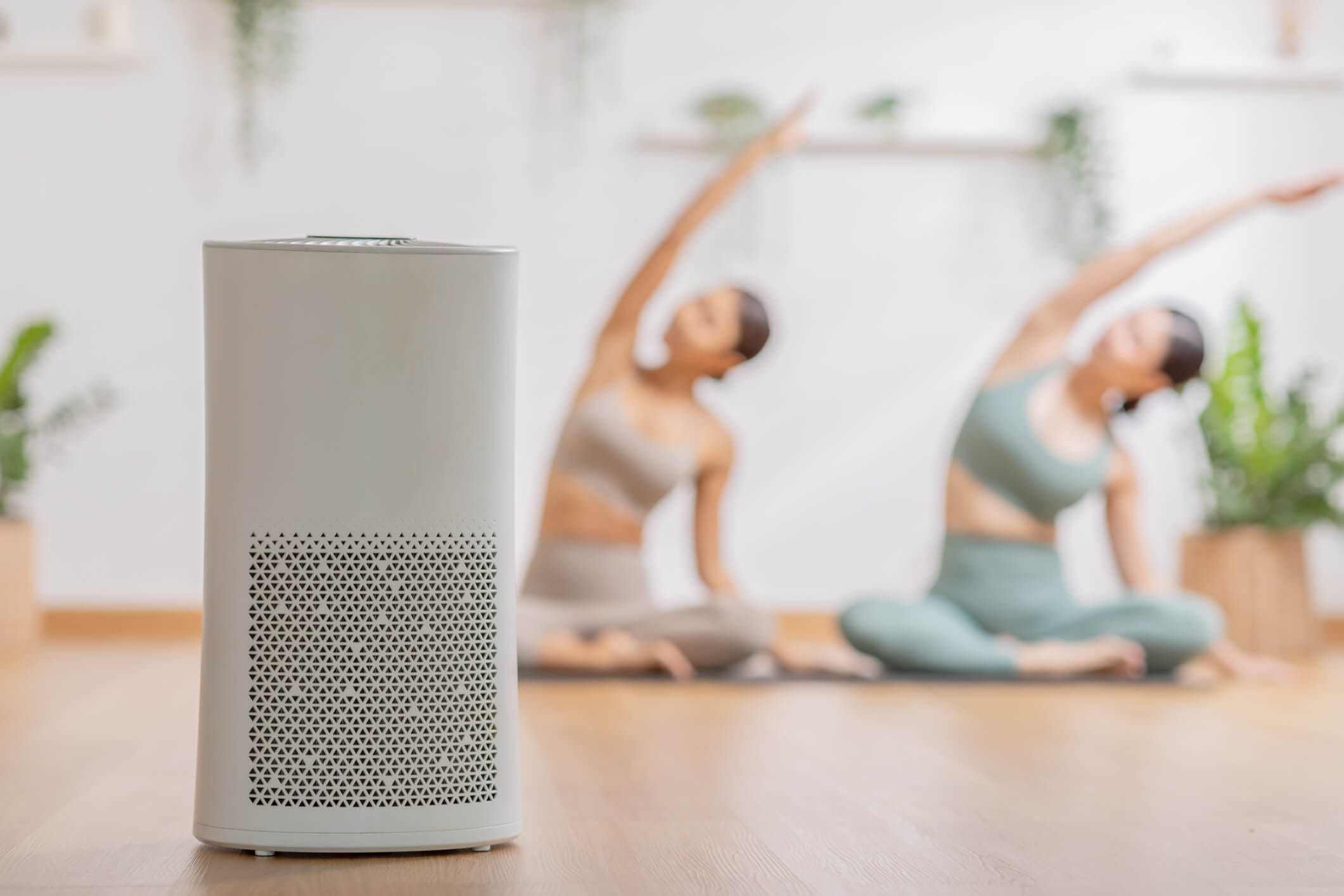
Exercise indoors whenever possible when the air quality is poor.
Exercise increases respiratory rates, which means inhaling more air—and potentially more pollutants. During periods of high pollution (AQI over 150), it’s advisable to exercise indoors or modify outdoor routines to lower intensity and duration. Indoor exercise is a safer alternative when the AQI reaches unhealthy levels. The AQI serves as a guide for determining the safety of outdoor activities. Different AQI levels suggest varying degrees of caution:
- Moderate (Yellow, 51-100): At this level, the air quality is acceptable, but there might be a risk for some people, particularly those who are unusually sensitive to air pollution. Sensitive individuals should consider reducing prolonged or heavy outdoor exertion.
- Unhealthy for Sensitive Groups (Orange, 101-150): People with respiratory or heart conditions, children, and older adults should reduce prolonged or heavy exertion. It’s a good idea for these groups to limit time spent on outdoor activities and consider indoor exercises.
- Unhealthy (Red, 151-200): Everyone should reduce prolonged or heavy exertion. High-intensity outdoor activities should be limited, and it’s advisable to reschedule or shorten them. Sensitive groups should avoid prolonged outdoor exertion.
- Very Unhealthy (Purple, 201-300) and Hazardous (Maroon, 301-500): At these levels, everyone should avoid outdoor activities. The risk of adverse health effects increases significantly, and staying indoors becomes crucial.
While everyone is affected by polluted air, certain groups are more vulnerable and should take extra precautions:
- Individuals with Pre-existing Health Conditions: People with respiratory conditions (like asthma or COPD), cardiovascular diseases, and other chronic illnesses are more susceptible to the effects of air pollution.
- Children and Older Adults: These groups have less robust respiratory systems. Children’s lungs are still developing, and older adults often have diminished lung capacity or pre-existing health issues.
- Pregnant Women: There’s growing evidence that air pollution can affect pregnancy outcomes, so pregnant women should also be cautious.
Use an Air Purifier

In the context of the Philippines, where urban and industrial air pollution can significantly impact air quality, the use of air purifiers becomes an important consideration, especially in densely populated cities. Understanding when and who might benefit from an air purifier is key to making an informed decision. Firstly, who should consider purchasing an air purifier to remove outdoor air pollution from their home?
- Residents in Urban Areas: Cities in the Philippines often experience higher levels of air pollution due to traffic congestion, industrial activities, and other urban sources. Those living in these areas can benefit greatly from air purifiers.
- Individuals with Health Concerns: People with respiratory issues, allergies, or cardiovascular diseases are more vulnerable to polluted air. Air purifiers can help reduce the risk of exacerbating these conditions.
- Homes with Children or Elderly: As these groups are more susceptible to air pollution, households with children or older adults should consider air purifiers to ensure a healthier living environment.
- Pregnant Women: To mitigate the potential adverse effects of air pollution on pregnancy outcomes, pregnant women might find air purifiers beneficial.
When should you turn on your air purifier? Well, the need to turn on an air purifier largely depends on the external AQI and indoor air quality:
- High Outdoor AQI: When the AQI outdoors is high, especially in the Unhealthy (Red, 151-200) range or above, it’s advisable to run an air purifier to keep indoor air as clean as possible.
- Poor Indoor Air Quality: Even during days with moderate outdoor AQI, indoor air quality can be poor due to factors like indoor cooking, smoking, or lack of ventilation. In such cases, an air purifier can help improve indoor air quality.
- Continuous Operation: In areas with consistently poor air quality, it may be beneficial to run air purifiers continuously, adjusting settings based on current AQI readings.
Unfortunately, choosing the right air purifier isn’t exactly straightforward. There are many different technologies that these air purifiers use, and there are also different models that support a range of features which can greatly impact price. If you’re looking for a budget air purifier, I recommend the Sqair from SmartAir. If you’re looking for something a bit more feature-rich, keep the following points in mind.
- HEPA Filters: High-efficiency particulate Air (HEPA) filters are effective in capturing fine particles, including PM2.5, commonly found in urban air pollution.
- Activated Carbon Filters: These can remove gases and odours, which are beneficial in areas with high traffic or industrial emissions.
- Smart Features: Some advanced air purifiers offer real-time air quality monitoring and can adjust their operation based on the detected air quality levels.
Of course, it’s important to mention that alongside using an air purifier, you should be careful to ensure that outdoor air doesn’t have any entry points into your home. On that note, let’s discuss that topic!
‘Lock Down’ Your Home
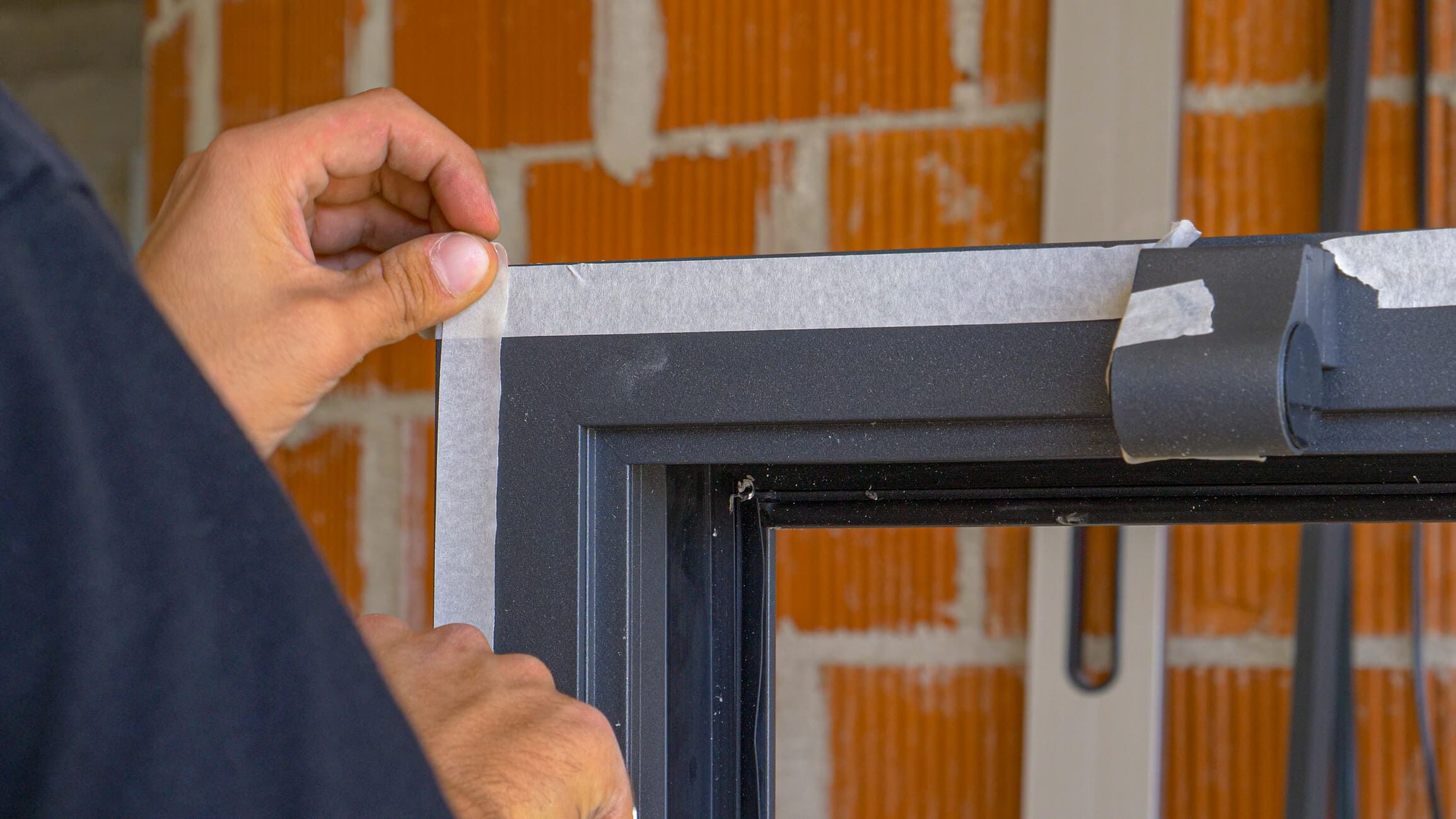
‘Locking down’ your house as a precaution during days of high pollution is crucial, particularly in areas like Manila, where air quality can deteriorate significantly. This proactive approach involves securing various points in your home to prevent the intrusion of polluted air, thereby maintaining a healthier indoor environment.
Air pollution can permeate into homes through seemingly minor openings. Gaps under doors, around windows, and even through ventilation systems can serve as entry points for pollutants. Particulate matter (PM2.5 and PM10), along with other harmful substances like nitrogen dioxide and sulfur dioxide, can easily infiltrate these gaps. The smaller the particle, the easier it can enter your home, posing health risks even when indoors.
Sealing gaps under windows and doors is a fundamental step. Weather stripping or door sweeps can be employed to block these gaps effectively. These are relatively inexpensive and easy to install, offering a first line of defence against outdoor pollutants. Similarly, caulking around window frames can prevent air leaks, further fortifying your home against pollution.
Another critical aspect is managing ventilation systems and extraction fans. While these systems are designed to circulate air and expel moisture and odours, they can inadvertently allow polluted air to enter. On days of high pollution, it’s advisable to limit the use of these fans. If the use of an extraction fan is necessary, such as in kitchens or bathrooms, consider installing an air purifier or using temporary covers for these fans when not in use to minimize air infiltration.
Closing windows and doors is an obvious yet essential measure. However, this can lead to other issues like reduced air circulation and increased indoor pollutants like carbon dioxide. To address this, air purifiers with HEPA filters can be used to clean the indoor air without opening windows. These filters are highly effective in trapping fine particles and other common air pollutants.
Finally, monitoring the air quality both outdoors and indoors is essential. Utilizing air quality monitoring apps or devices can help you determine the best times to ‘lockdown’ your house and when it’s safe to open windows for ventilation. However, this point could use its own section!
Use an Air Quality Monitor

The AirGradient ONE indoor air quality monitor.
Air quality monitors are useful for individuals seeking to manage their exposure to air pollution proactively. These devices, available in various forms like indoor, outdoor, and portable monitors, provide essential data that can guide decisions to mitigate health risks associated with poor air quality.
Indoor Air Quality Monitors
Indoor air quality monitors are useful for assessing the air quality within your home. These devices measure a range of pollutants, including particulate matter (PM2.5 and PM10), volatile organic compounds (VOCs), carbon dioxide, and even humidity and temperature, which can affect how pollutants behave indoors.
By providing real-time data, these monitors enable you to make immediate changes to improve indoor air quality, such as activating air purifiers, increasing ventilation, or identifying sources of pollution within the home. Knowing when to use an air purifier is particularly important, as these devices are most effective when pollutant levels are high.
Outdoor Air Quality Monitors
Outdoor air quality monitors are designed to assess the quality of the air in your immediate external environment. These devices can be installed outside your home and provide data on local air pollution levels, including the concentration of various pollutants.
This information is particularly useful for planning outdoor activities, understanding the best times to open windows for ventilation, and deciding when to ‘lockdown’ your home during episodes of high pollution. By monitoring trends over time, you can also gain insights into the daily and seasonal patterns of air quality in your area. In the Philippines, devices like this are particularly useful because there often aren’t local monitors. When I was living in Davao, I always had one of these monitors outside my apartment!
Portable Air Quality Monitors
Portable air quality monitors offer the advantage of mobility, allowing you to assess air quality wherever you go. These compact devices can be carried around and used to measure air pollution in different environments, such as your workplace, schools, or public spaces. Since air quality can vary significantly from one location to another, having a portable monitor enables you to analyse the risk on the go and take necessary precautions, such as avoiding certain areas with poor air quality or wearing masks.
Air quality monitors, whether indoor, outdoor, or portable, are invaluable tools in the fight against air pollution. They provide crucial data that helps you understand the air quality around you, enabling informed decisions to protect your health. Air pollution levels can quickly fluctuate, and these monitors can be especially useful for taking timely and effective measures to minimize exposure to harmful pollutants.
Conclusion

In concluding this comprehensive exploration of air pollution in the Philippines, it is evident that while the issue is serious, it is not insurmountable. Air pollution, indeed a global challenge, manifests uniquely in the Philippines, affecting urban and rural areas differently. The stark contrast between the pristine rural landscapes and the smog-filled urban skies is a poignant reminder of the environmental challenges the country faces. Yet, amidst these challenges, the Philippines remains a land of immense beauty and cultural richness.
The article has delved into the various causes of air pollution in the Philippines, from vehicular emissions in bustling cities like Manila to agricultural practices in rural areas. Seasonal variations further complicate the air quality, with dry seasons bringing higher pollution levels. Understanding these dynamics is crucial for both residents and visitors to navigate the landscape safely and healthily.
For those planning to visit the Philippines, it’s important to be aware of these environmental factors. However, this knowledge should not deter you from experiencing the myriad wonders the country offers. By staying informed about local air quality, using air quality monitors, and adopting protective measures such as wearing masks and using air purifiers, you can significantly mitigate the risks posed by air pollution. Whether exploring the vibrant streets of Manila or the serene countryside, these precautions will ensure a safer and more enjoyable experience.
For residents, awareness and education are key. Understanding the health impacts of air pollution and taking proactive steps, such as monitoring air quality and ‘locking down’ homes during high pollution days, can make a substantial difference. The article underscores the importance of government policies and community efforts in combating air pollution, highlighting the need for continued vigilance and action.
In essence, while air pollution in the Philippines presents a significant challenge, it is one that can be managed with the right knowledge and tools. By taking informed steps to protect ourselves and our communities, we can continue to enjoy and preserve the natural beauty and cultural vibrancy of the Philippines. As we move forward, let’s carry a message of hope and resilience, embracing the beauty of the Philippines while acknowledging and addressing the environmental challenges it faces.
Air Pollution in the Philippines FAQ
What causes air pollution in the Philippines?
Air pollution in the Philippines is primarily caused by vehicle emissions, industrial activities, waste burning, and construction. Also, natural factors like volcanic eruptions contribute.
How can we solve air pollution in the Philippines?
Solutions include implementing stricter emissions standards, promoting public transportation and cleaner energy sources, and increasing green spaces.
Which city in the Philippines has the highest levels of air pollution?
Historically, Metro Manila has been reported to have the highest levels of air pollution due to its dense population and high volume of traffic and industrial activities.
Which sector in the Philippines is the largest contributor to air pollution?
The transportation sector, especially in urban areas, is typically the largest contributor to air pollution.
How bad is air pollution in the Philippines?
Air pollution levels in urban areas, particularly in Metro Manila, are often high, sometimes exceeding WHO recommended limits, impacting public health.
What is the main cause of air pollution in the Philippines?
The main cause is vehicular emissions, particularly in urban and densely populated areas.
Why is air pollution a problem in the Philippines?
Air pollution poses significant health risks, contributing to respiratory diseases, cardiovascular problems, and environmental degradation.
Have Questions or Comments?
Join the discussion on the BreatheSafeAir Community Forum. Ask any questions you have about air quality or adjacent topics and get quick answers!
